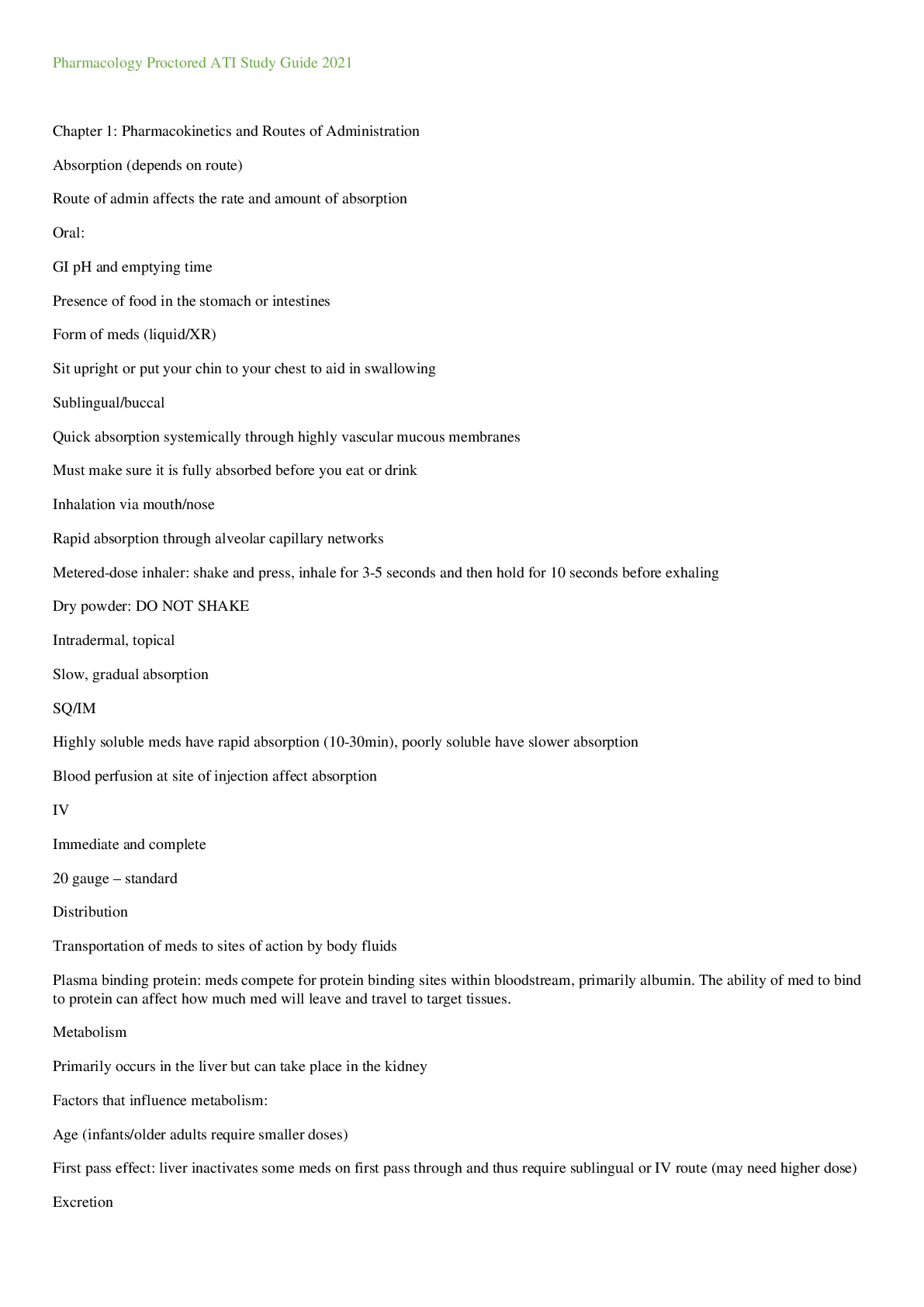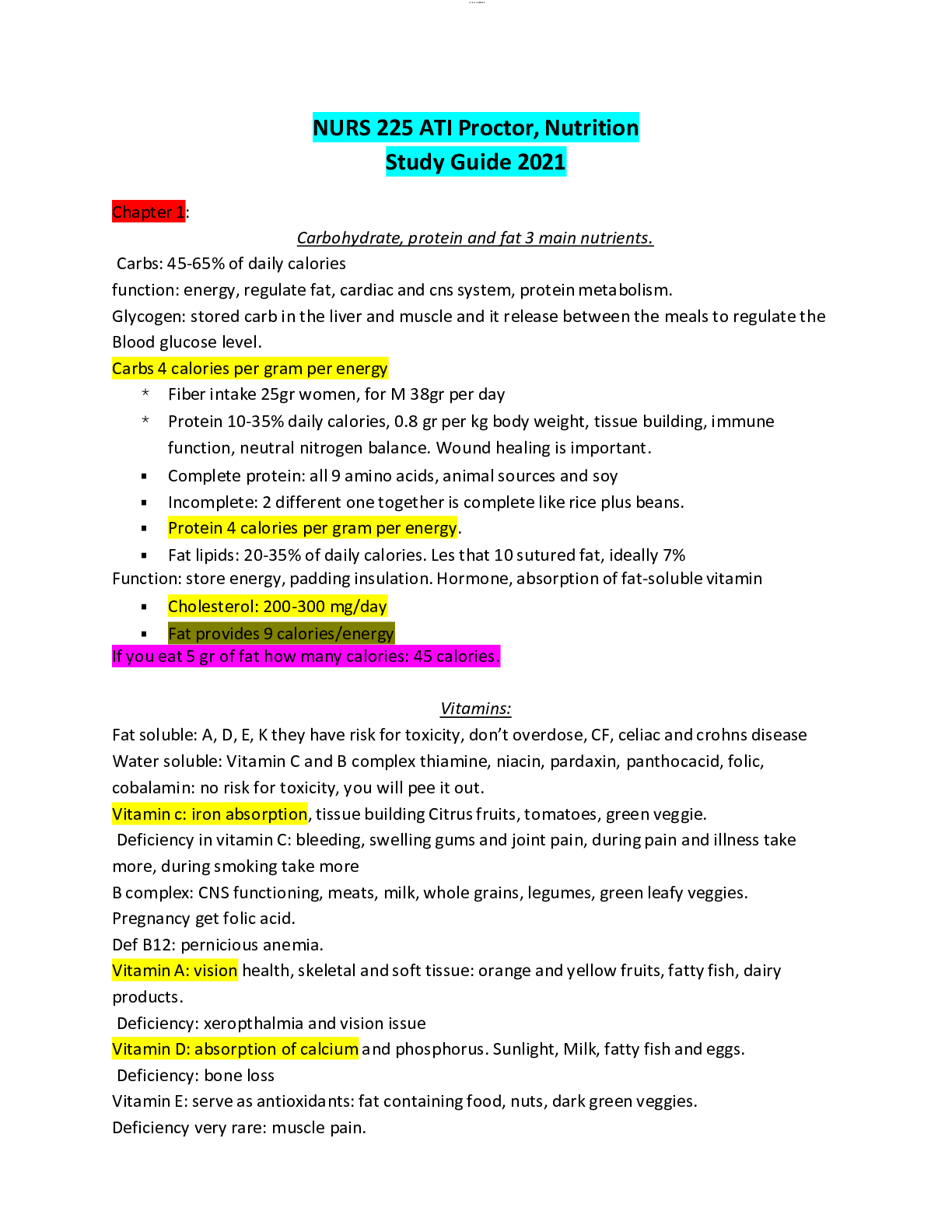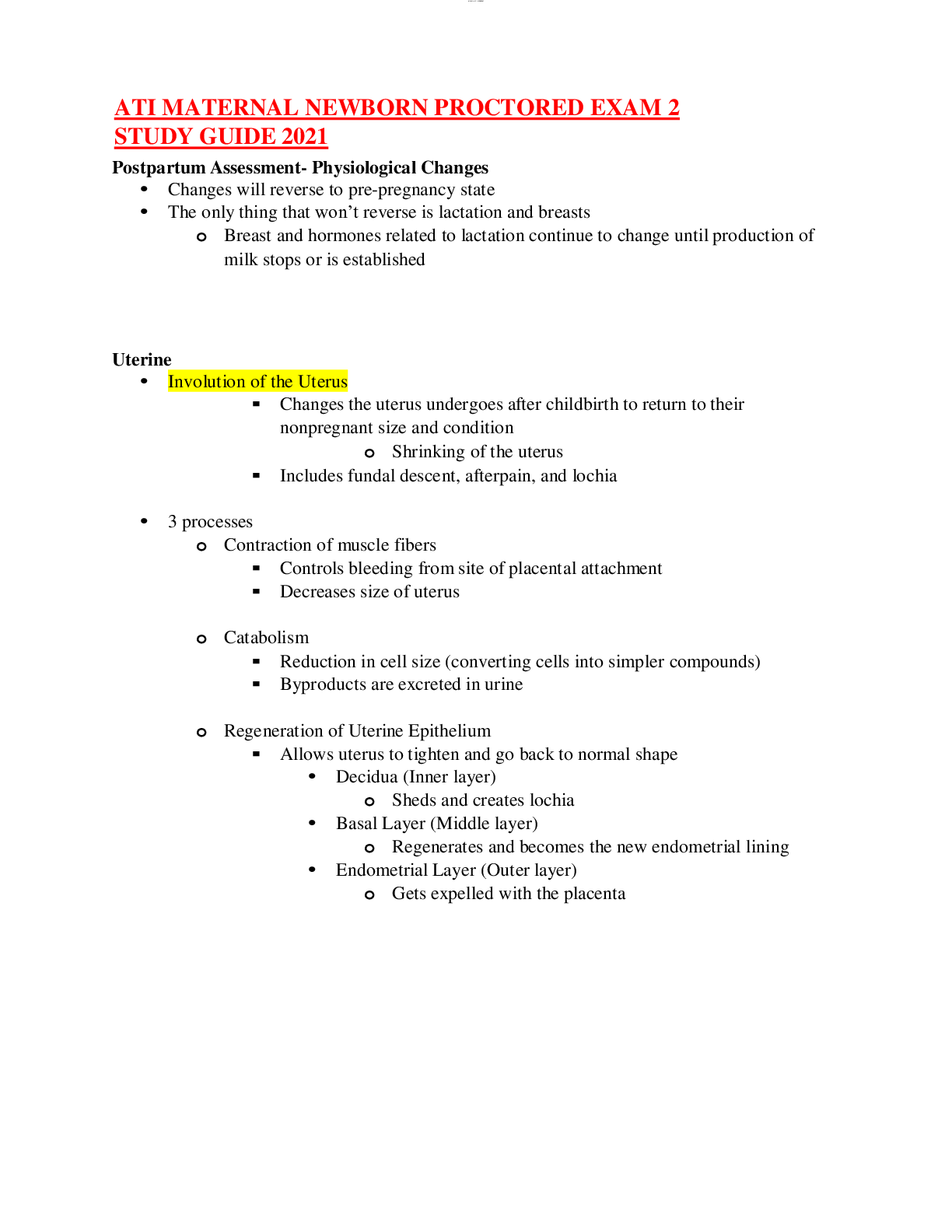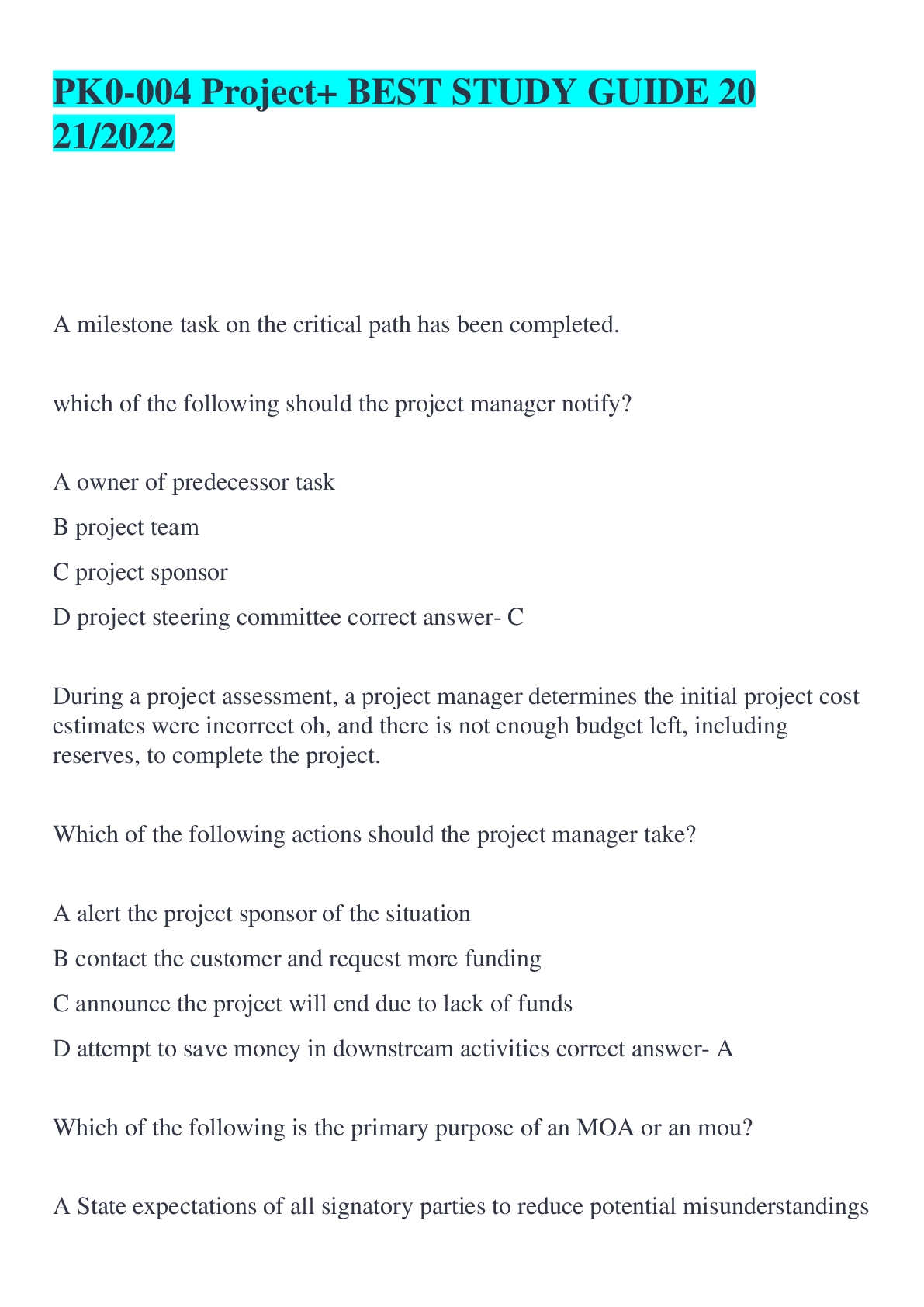Health Care > STUDY GUIDE > ATI MED SURG MIDTERM EXAM Study Guide 2021 (All)
ATI MED SURG MIDTERM EXAM Study Guide 2021
Document Content and Description Below
Fluids and electrolyte imbalance -Signs and symptoms of hypovolemia and dehydration vs. hypervolemia ● Hypovolemia = circulating blood volume is decreased leading to inadequate tissue perfusion o Si... gns/symptoms of hypovolemia: Dry mucous membranes, poor skin turgor, excessive thirst, initial increase in HR to compensate then a decrease, oliguria, anuria, tachycardia, decrease in BP, lethargy, rapid breathing, confusion, prolonged capillary refill, cold and clammy extremities ● Dehydration = fluid loss / Isotonic dehydration = water and electrolyte loss o Fluid is lost only from the ECF, including both the plasma and interstitial spaces o Signs/symptoms of dehydration: Increase in HR, weak peripheral pulses, decrease in BP, increased respiratory rate, dry and scaly skin, poor skin turgor, dry mucous membranes, confusion, low-grade fever, concentrated urine ● Hypervolemia = excessive fluid it the ECF (extracellular fluid space) o Bounding pulse, difficulty breathing, neck vein distension in the upright position, dependent edema, elevated BP, weight gain, increased respiratory rate, shallow respirations, dyspnea, crackles in lungs, skin is cool and pale, headache, skeletal muscle weakness Found this on allnurses.com… Thought it’d be helpful because I’m stupid ● dehydration is a condition that occurs when there has been excessive loss of body fluid. the nursing diagnosis for this is deficient fluid volume ○ de - from, without ○ hydra - water ○ tion - state of being ■ literally, a state of being without water ● hypovolemia refers to decreased fluid volume of the blood. ○ hypo - under, beneath, below, low ○ vol(umen) - volume ○ emia - blood ■ literally, blood volume that is low -Normal ranges of Na, K, Ca, Mg ● Sodium: 136-145 mEq/L ● Potassium: 3.5-5.0 mEq/L ● Calcium: 9.0-10.5 mgEq/dL ● Phosphorus: 3.0-4.5 mgEq/DL -Most common signs/sx of hypo/hypercalcemia, hyper/hypokalemia hyper/hyponatremia and hypomagnesemia ● Hyponatremia: serum sodium level below 136 o Behavioral changes resulting from cerebral edema and increased intracranial pressure; sudden onset of confusion in older adults; general muscle weakness; increased motility causing nausea, diarrhea and abdominal cramping; bowel sounds are hyperactive (rushes and gurgles over the splenic flexure in the lower left quadrant; bowel movements are frequent and watery o Hyponatremia and hypovolemia include a rapid, weak and thready pulse; easily blocked with light pressure; blood pressure is decreased; central venous pressure is low o Hyponatremia and hypervolemia include cardiac changes include a full or bounding pulse with a normal or high blood pressure ● Hypernatremia: serum sodium level 145 [Show More]
Last updated: 1 year ago
Preview 1 out of 43 pages
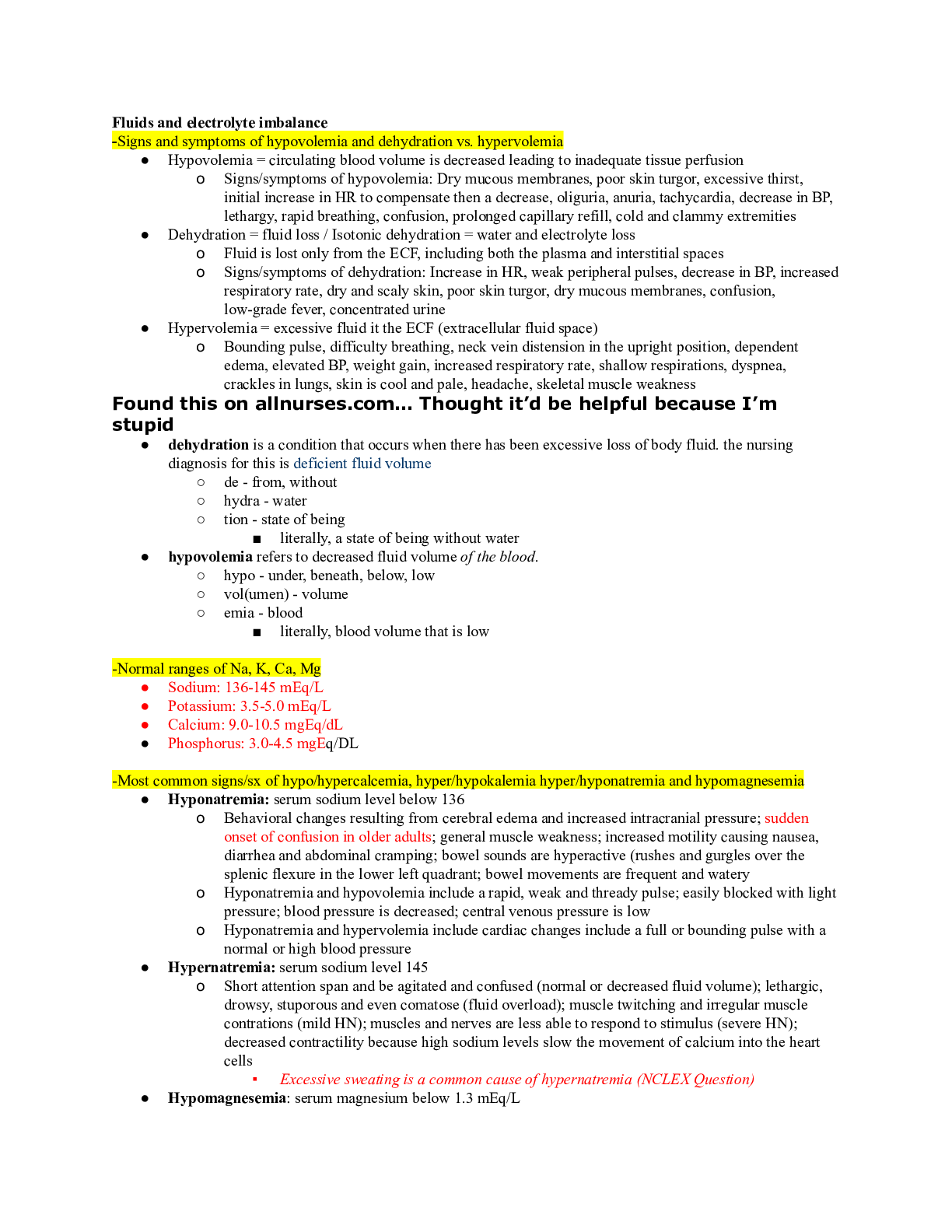
Reviews( 0 )
Document information
Connected school, study & course
About the document
Uploaded On
Apr 15, 2021
Number of pages
43
Written in
Additional information
This document has been written for:
Uploaded
Apr 15, 2021
Downloads
0
Views
50

.png)
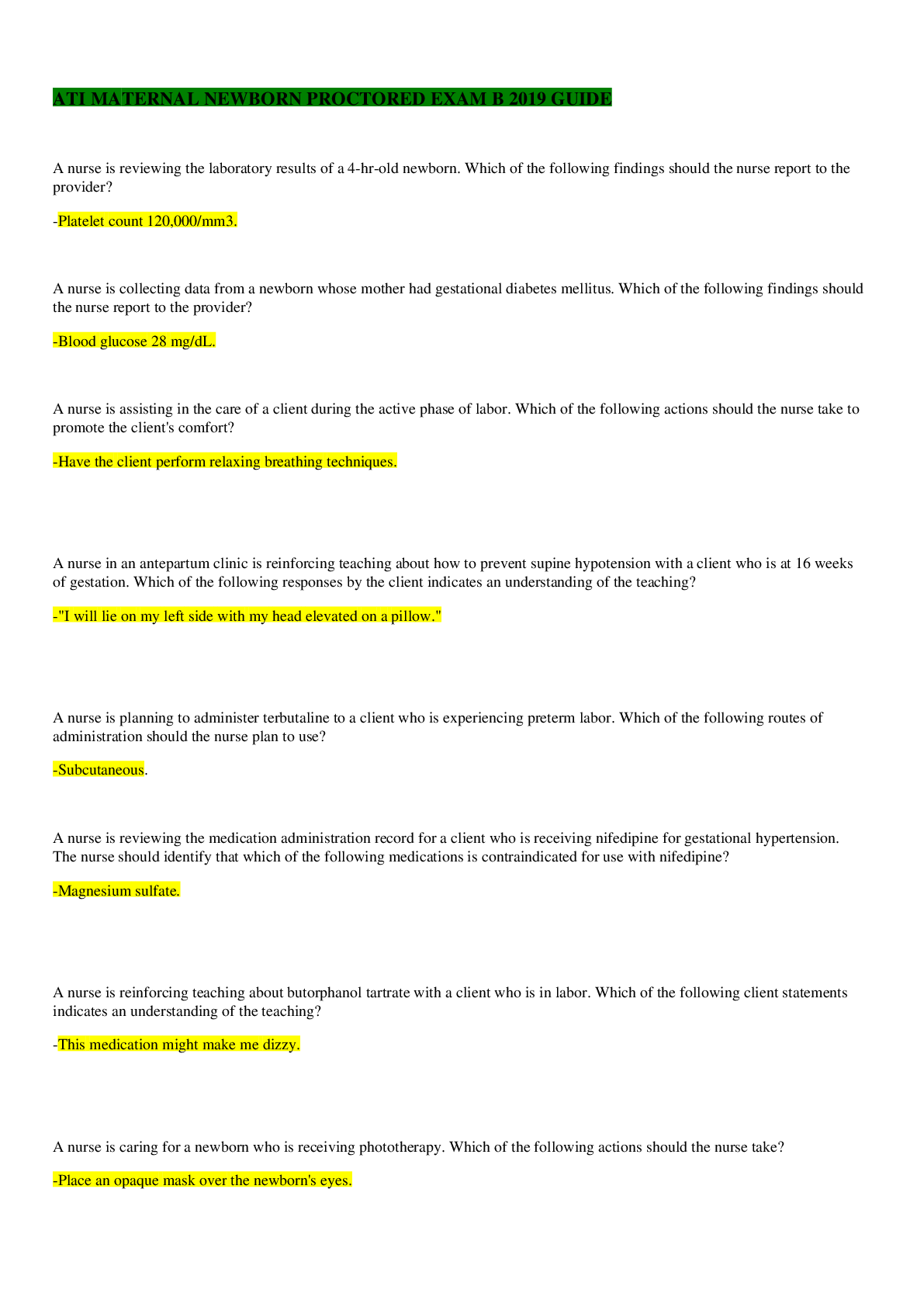
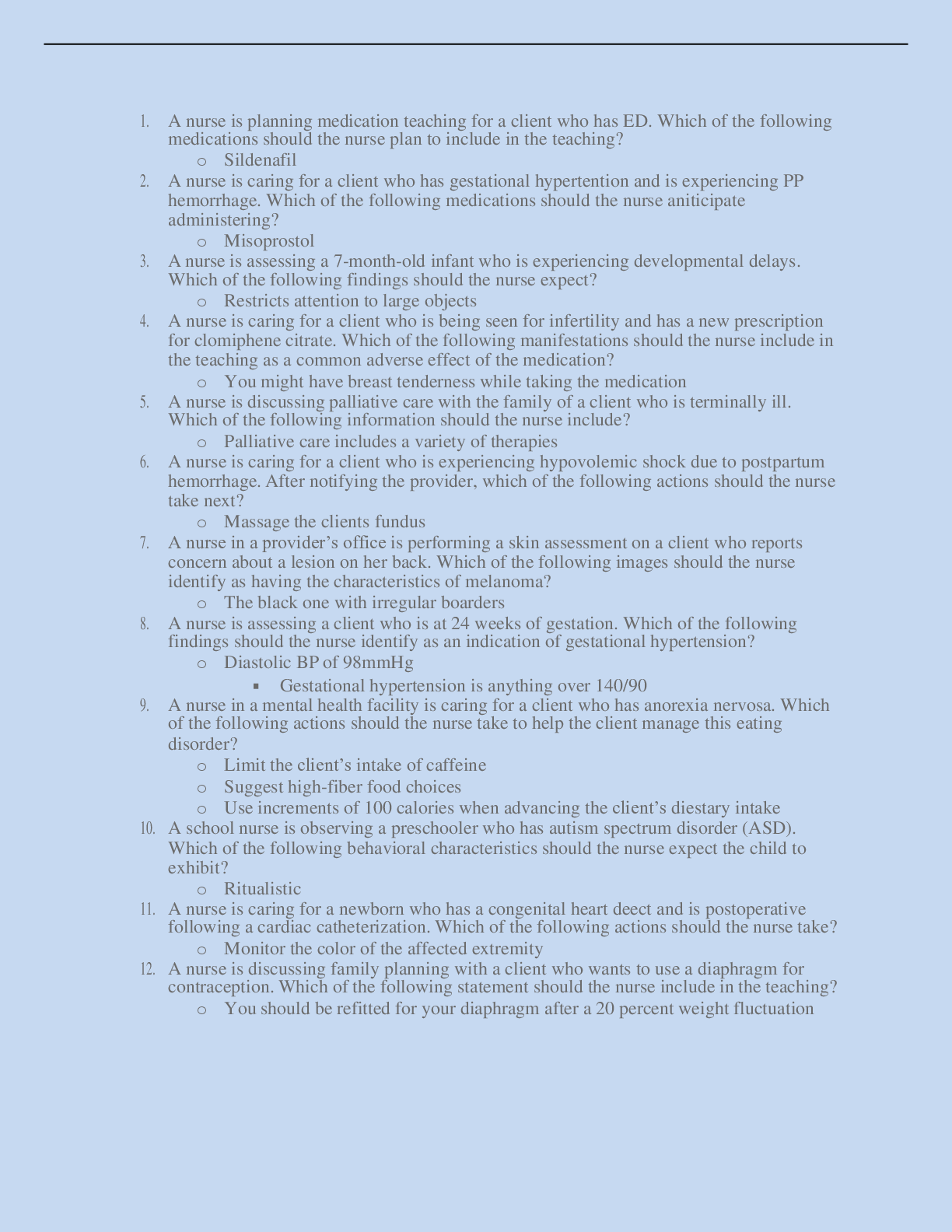
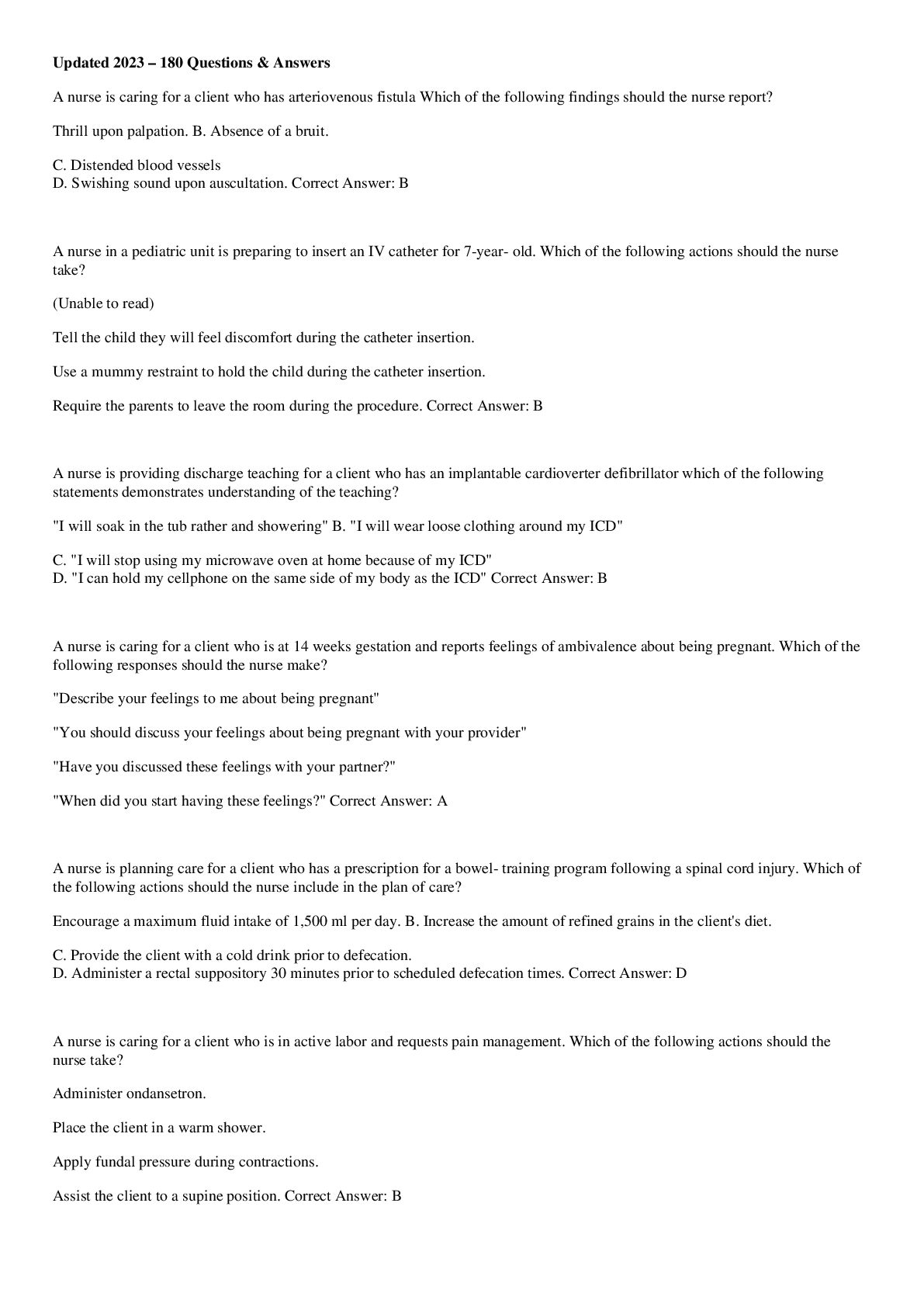
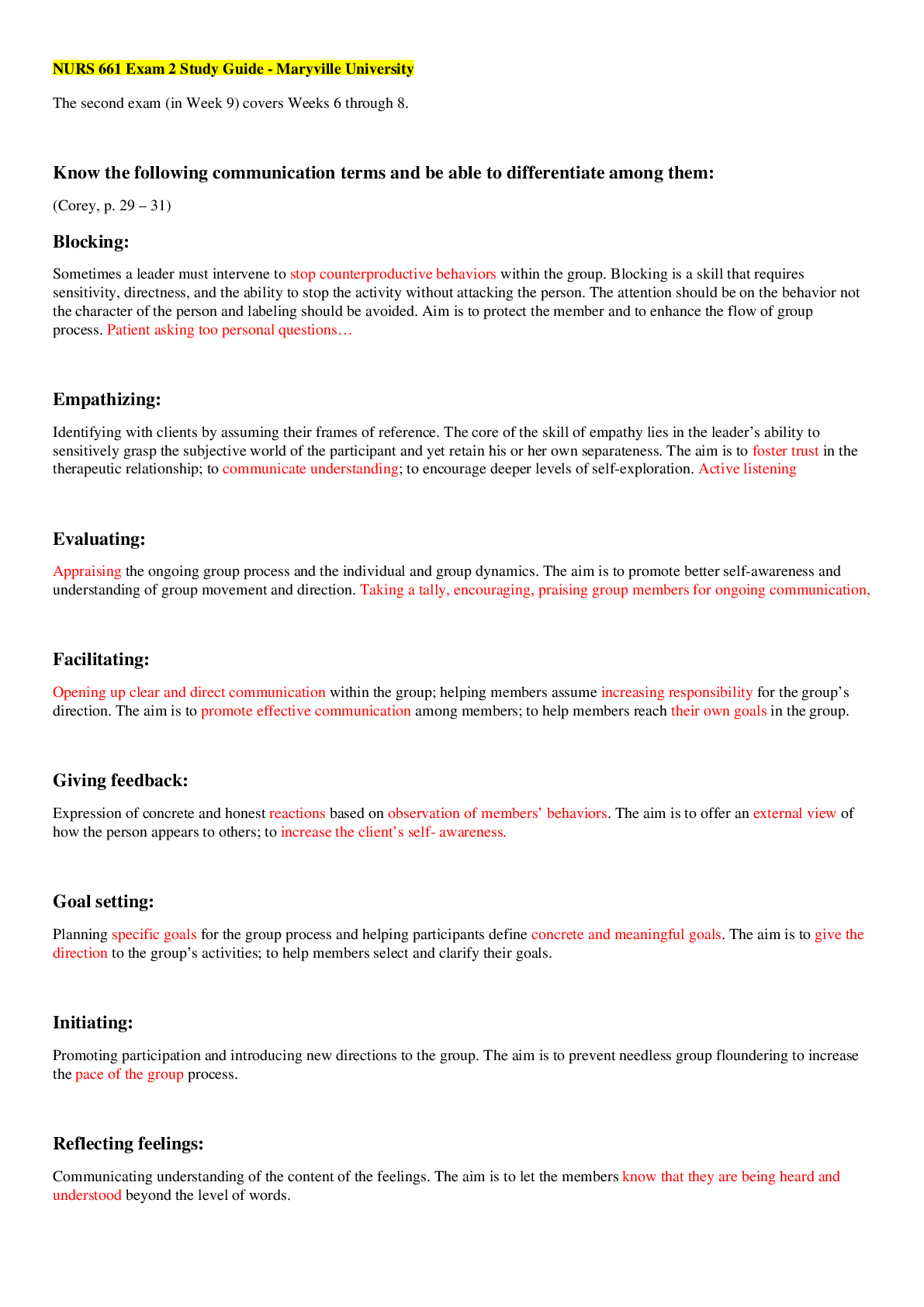
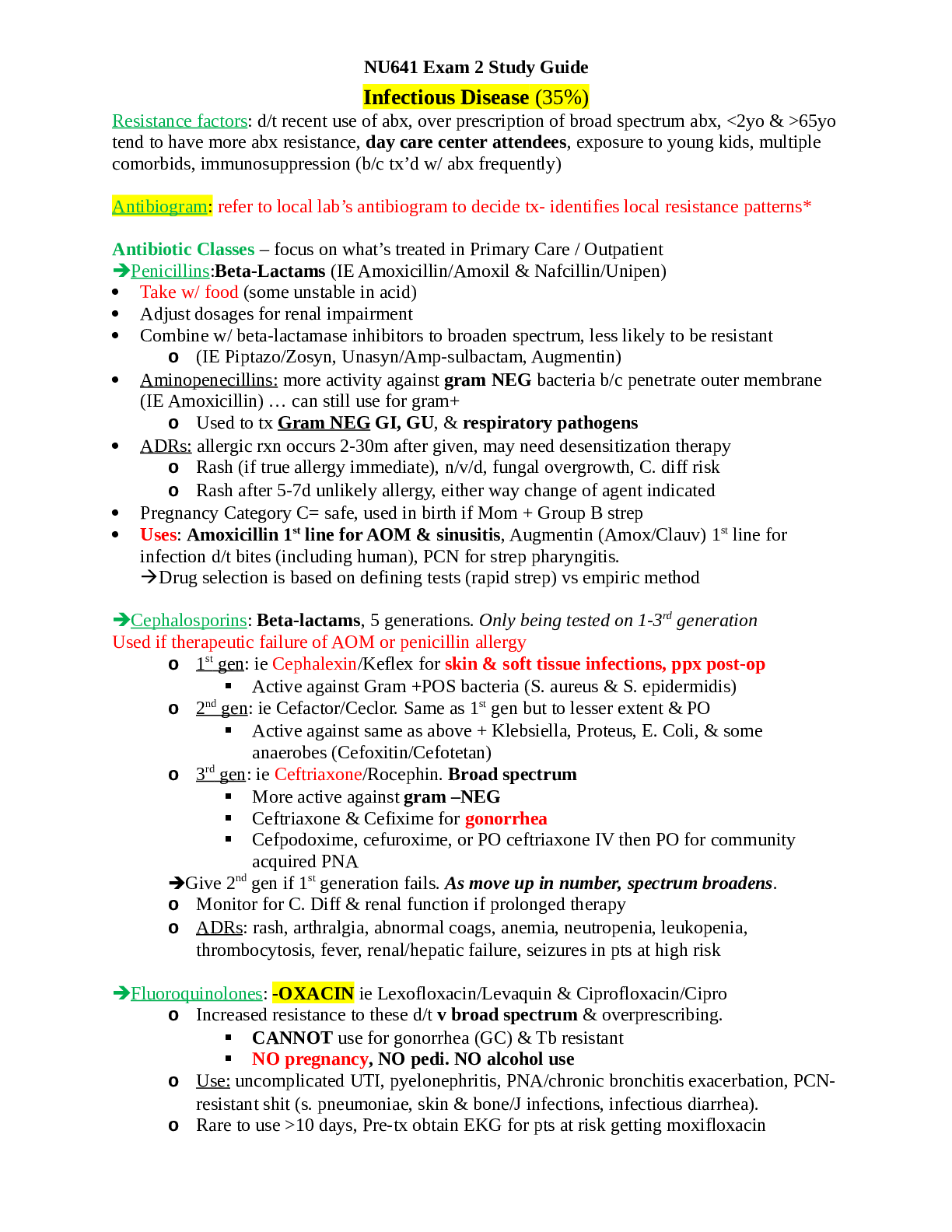
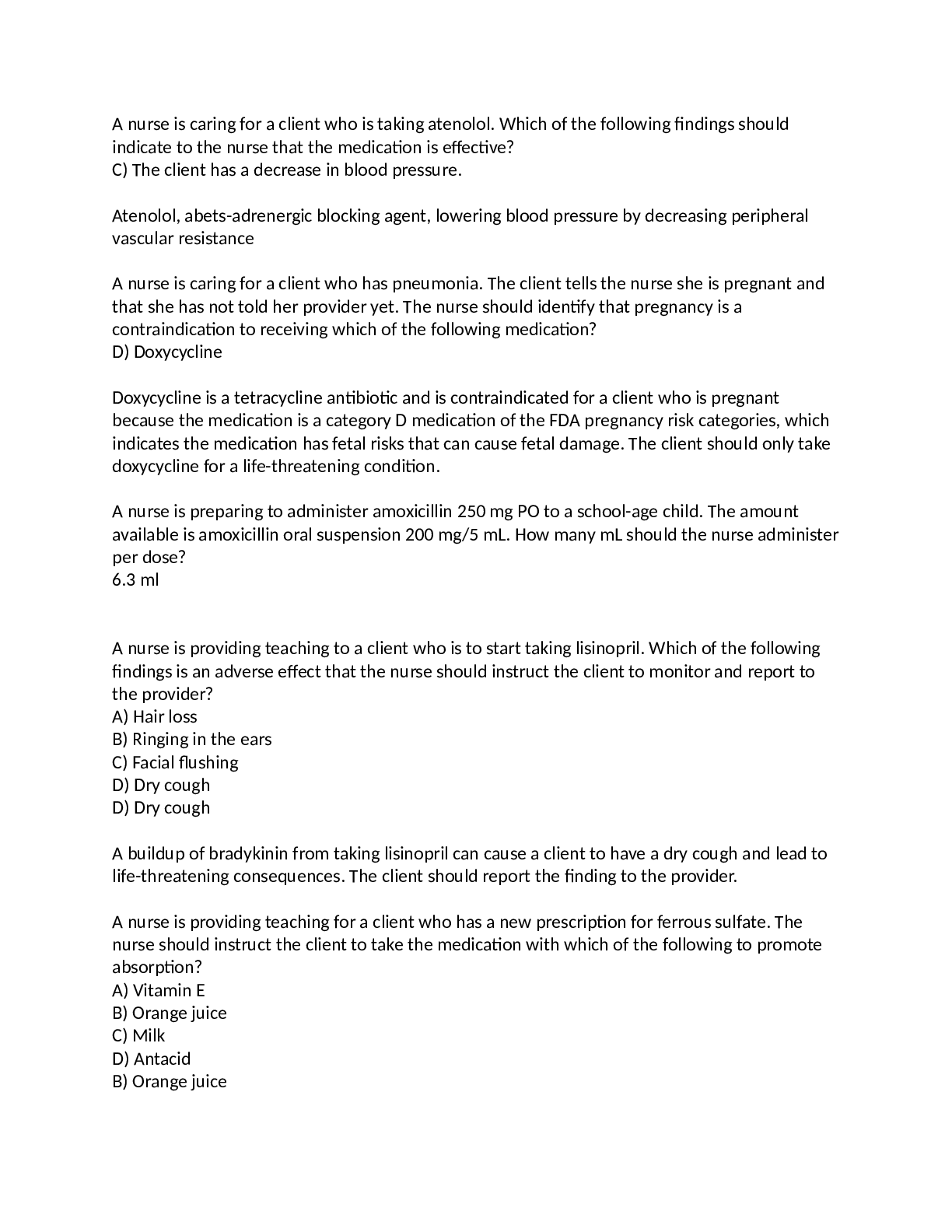

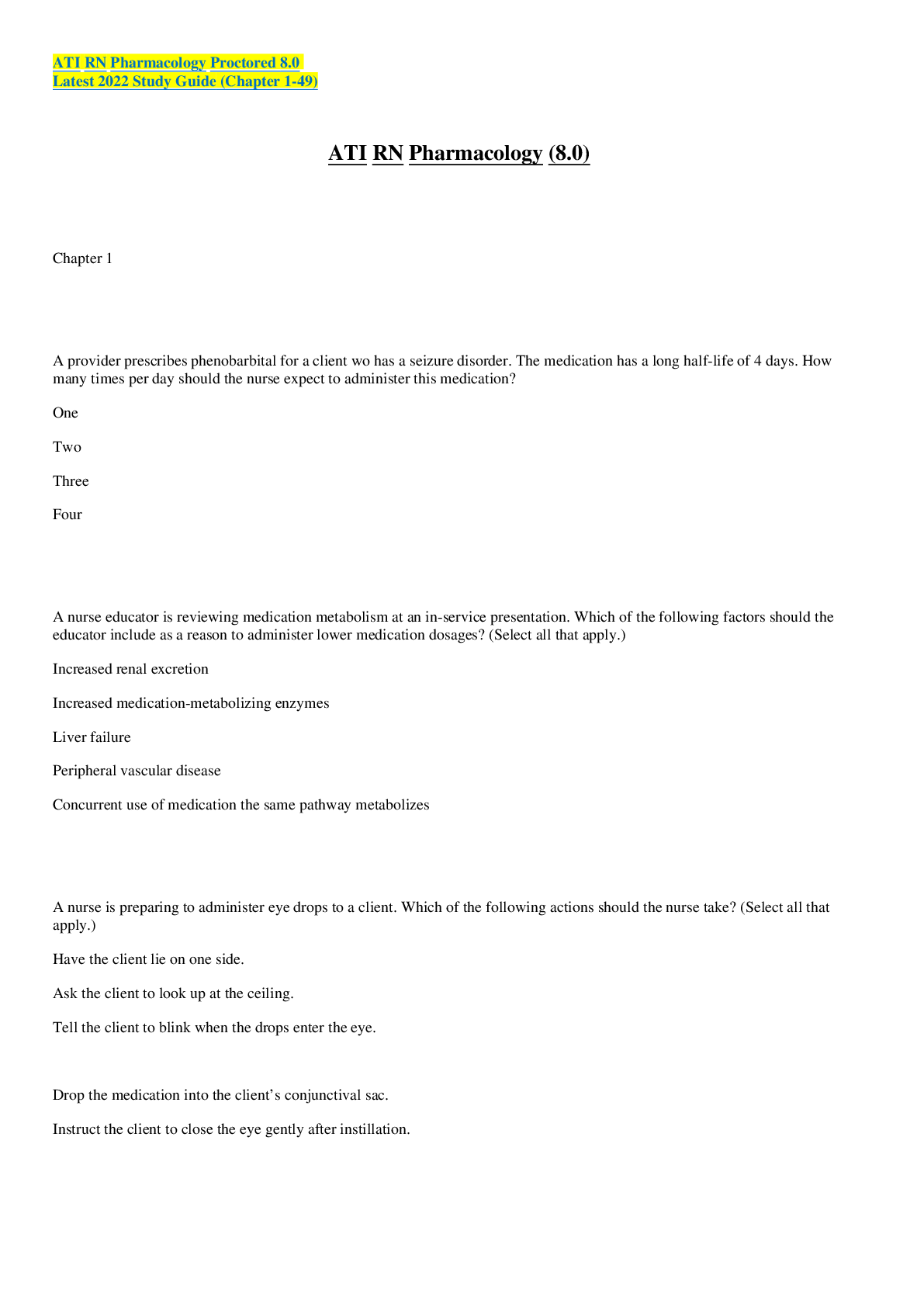
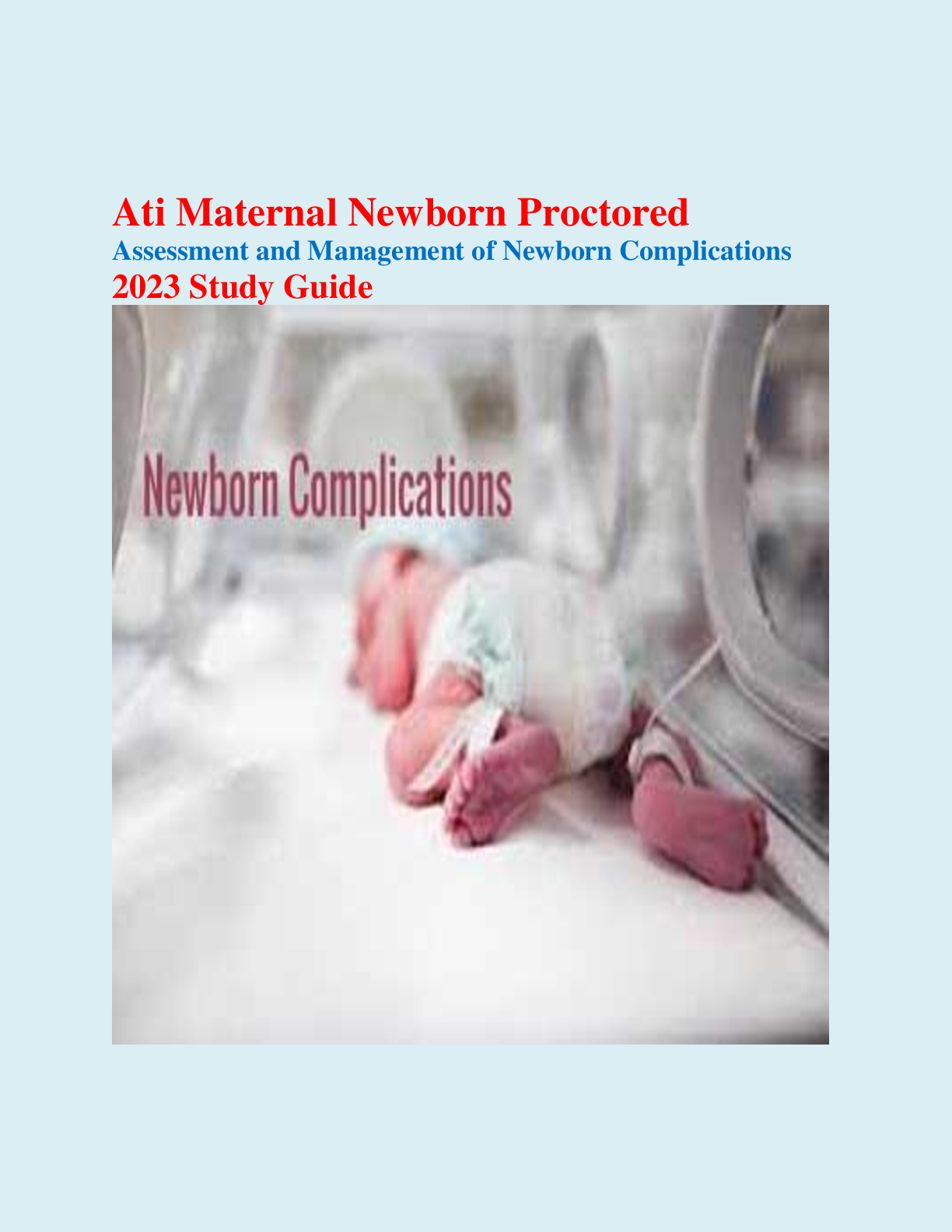
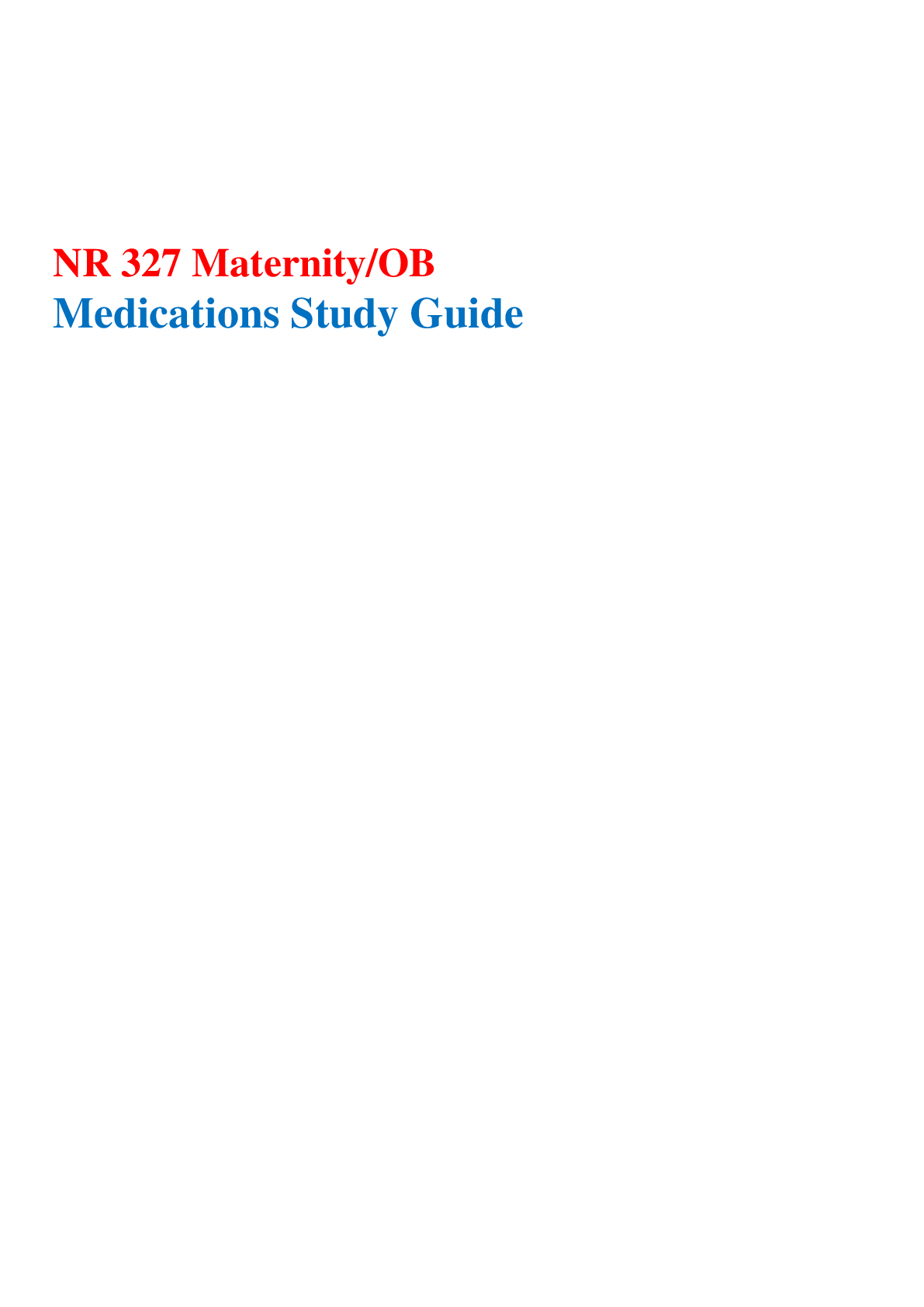
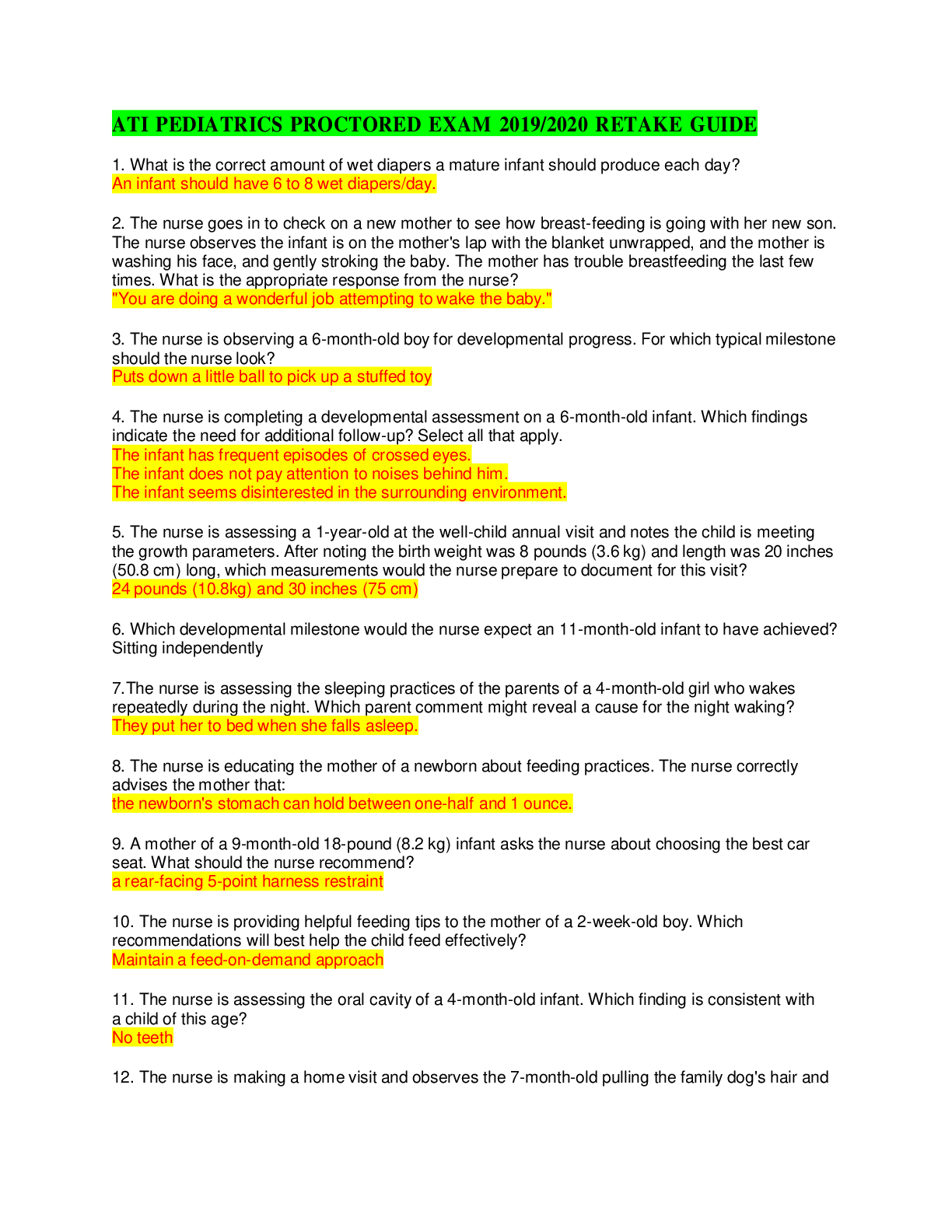

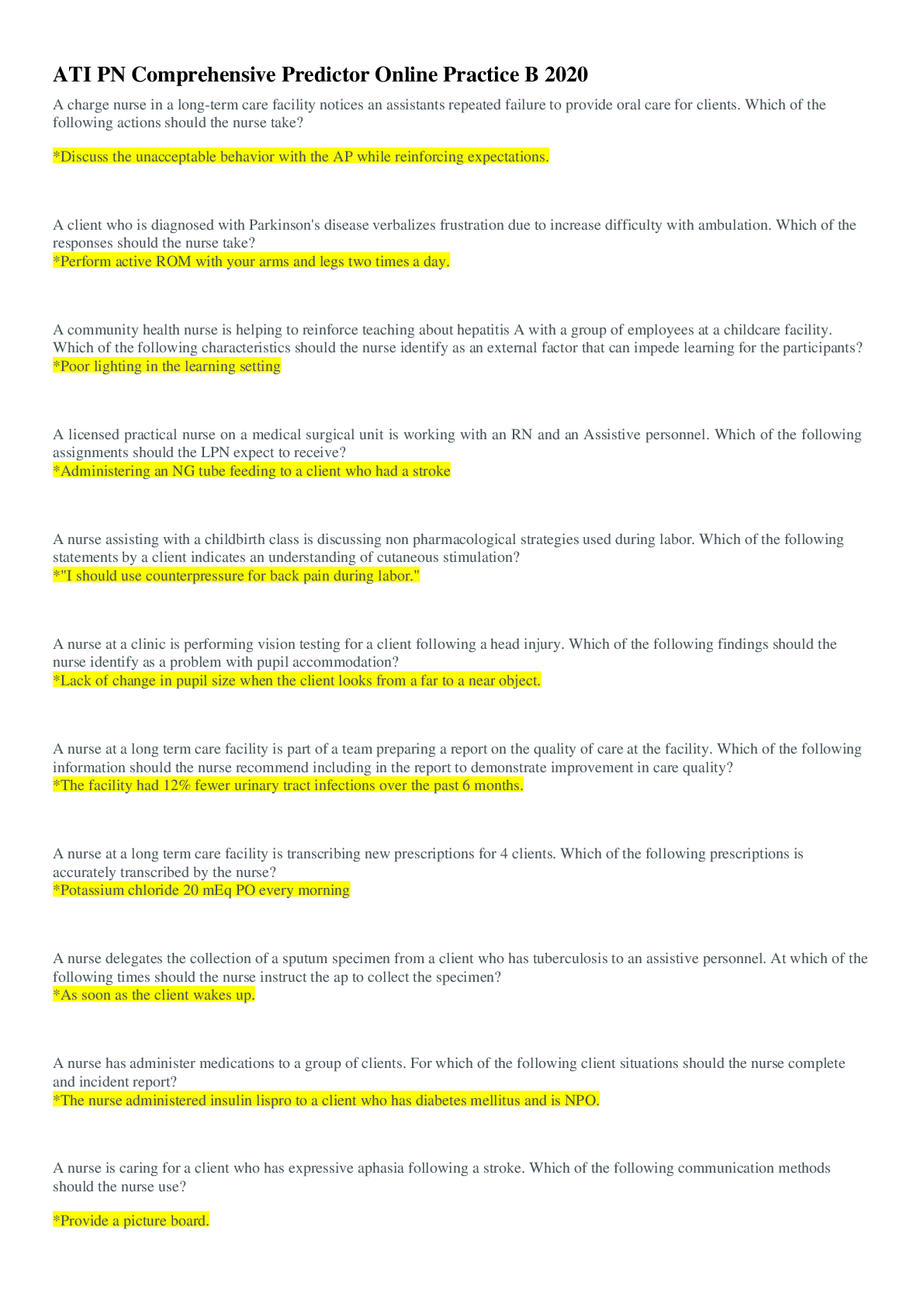


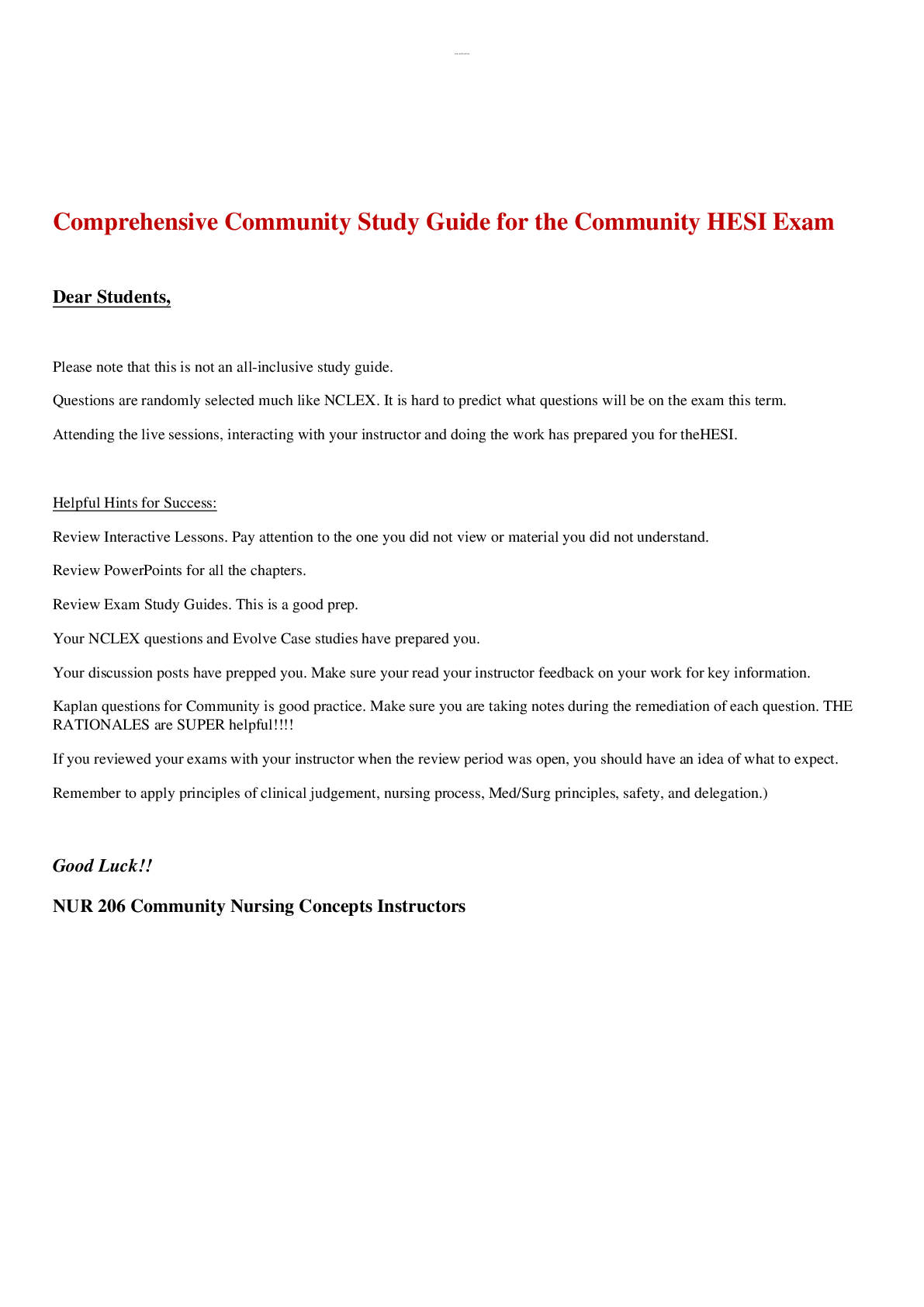

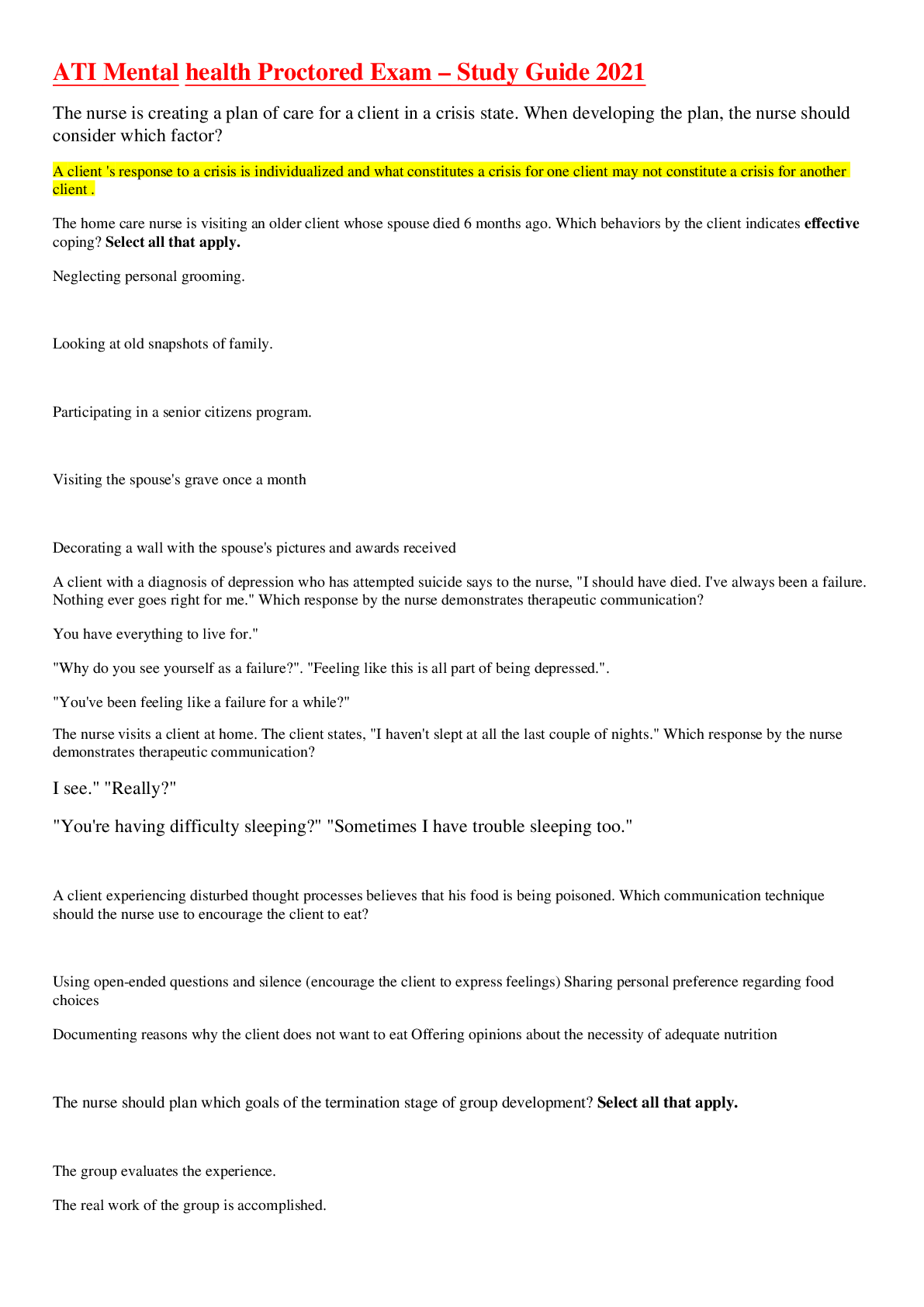
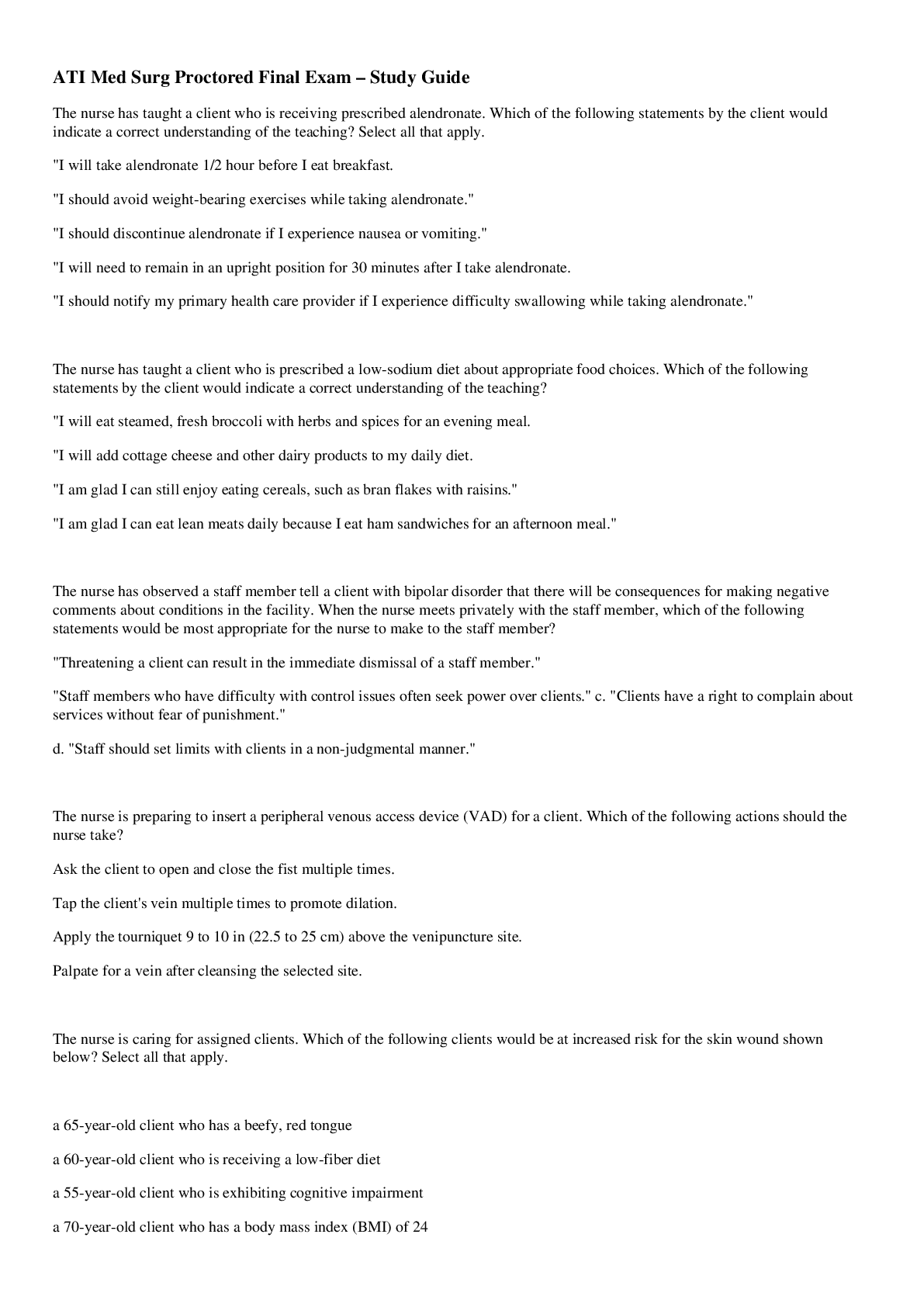
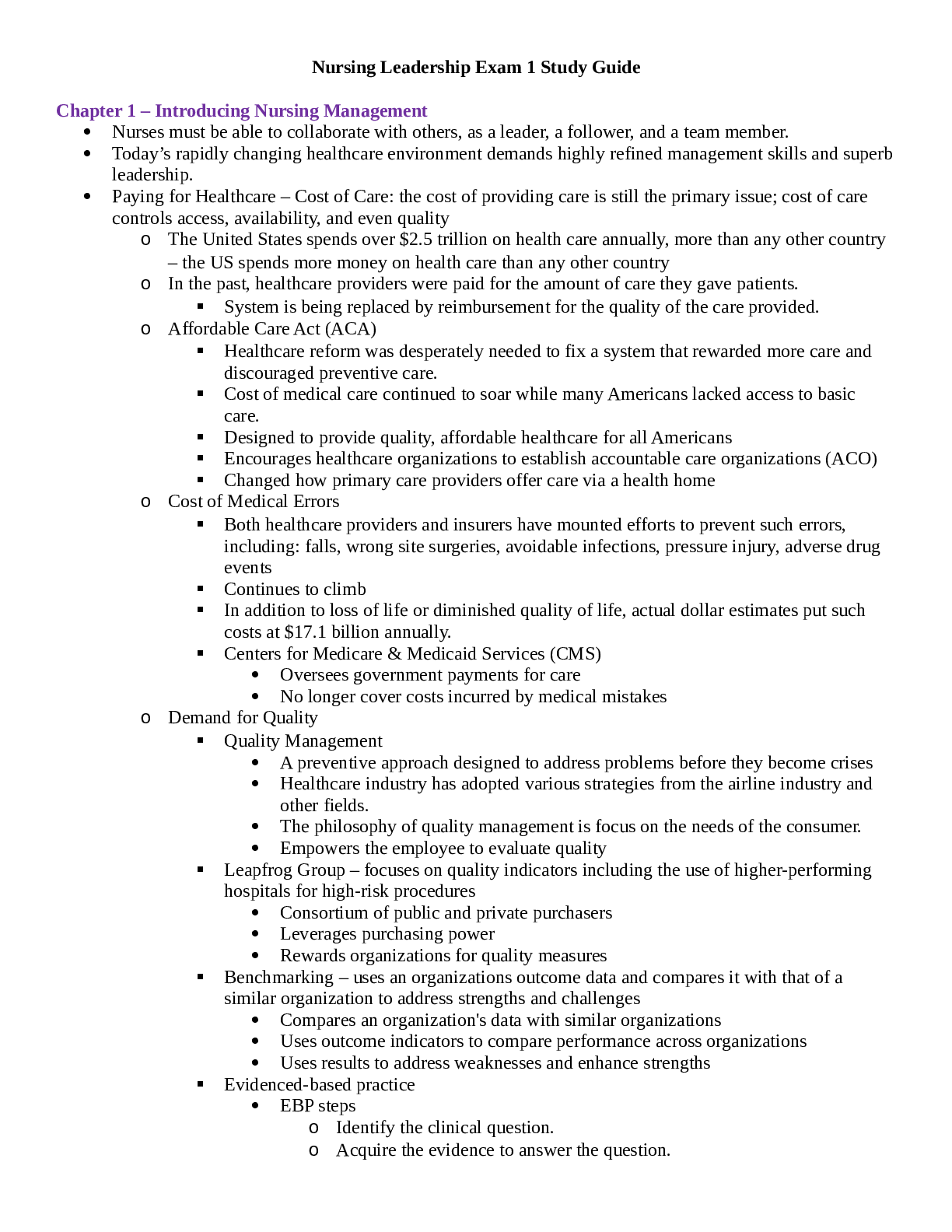
.png)

